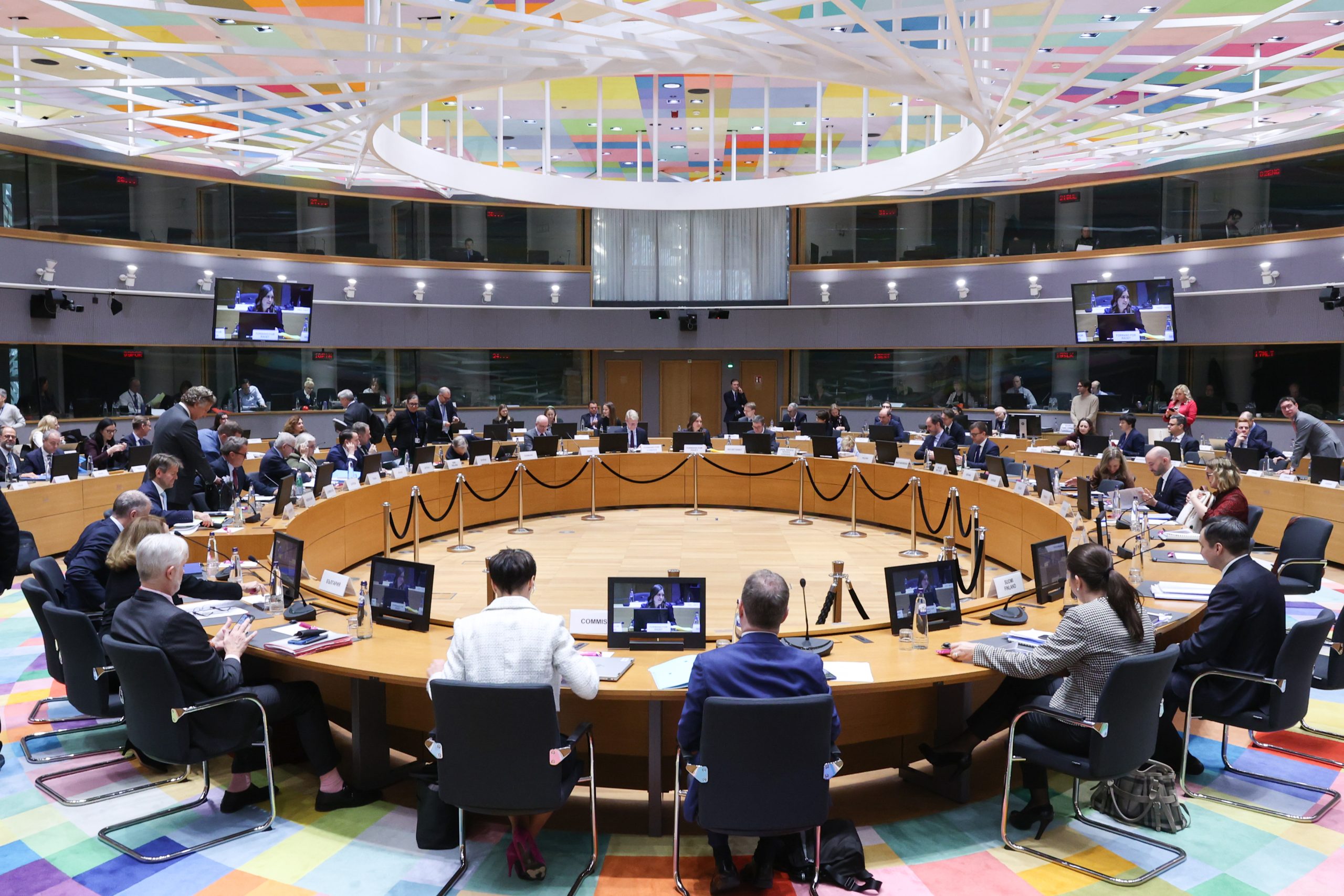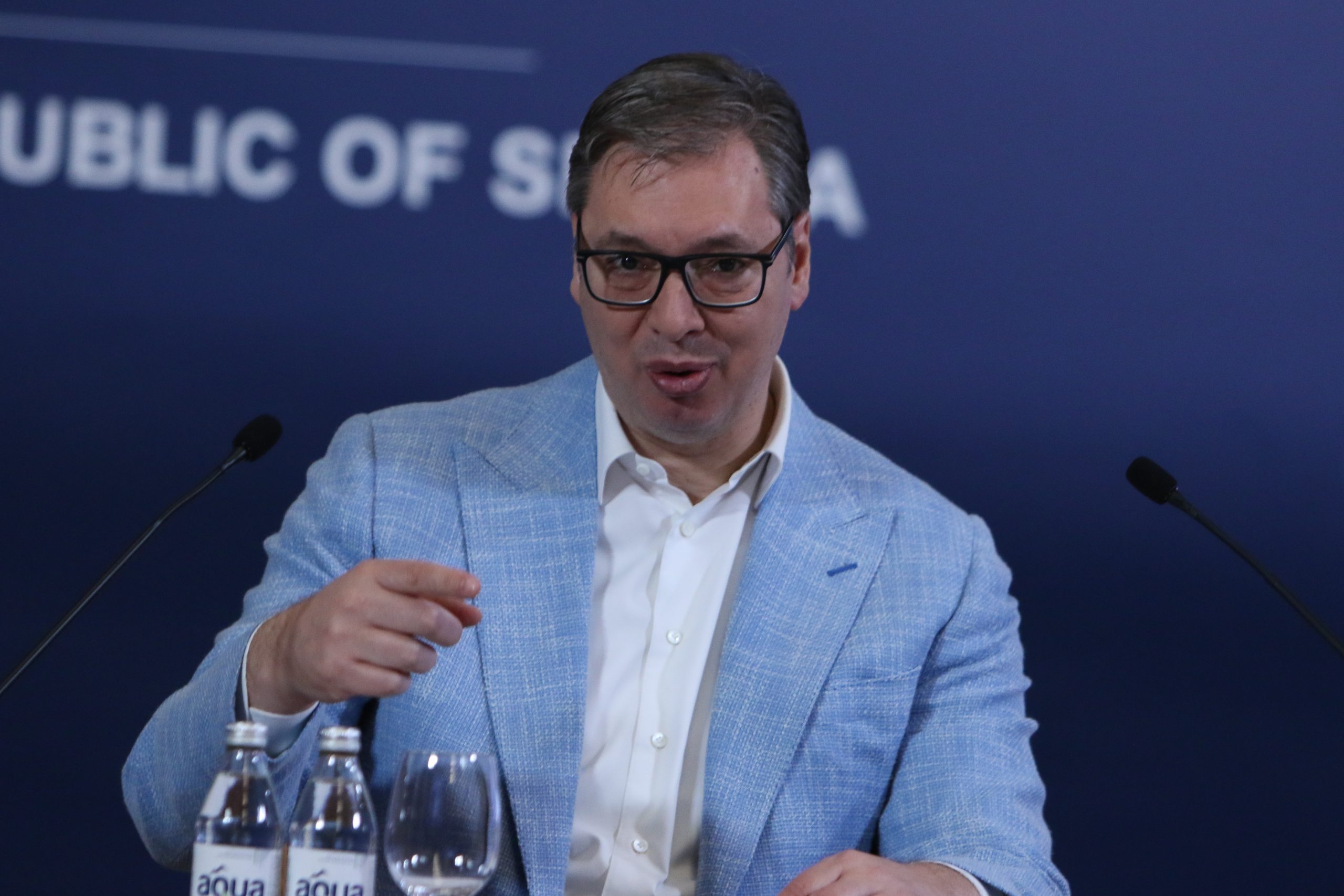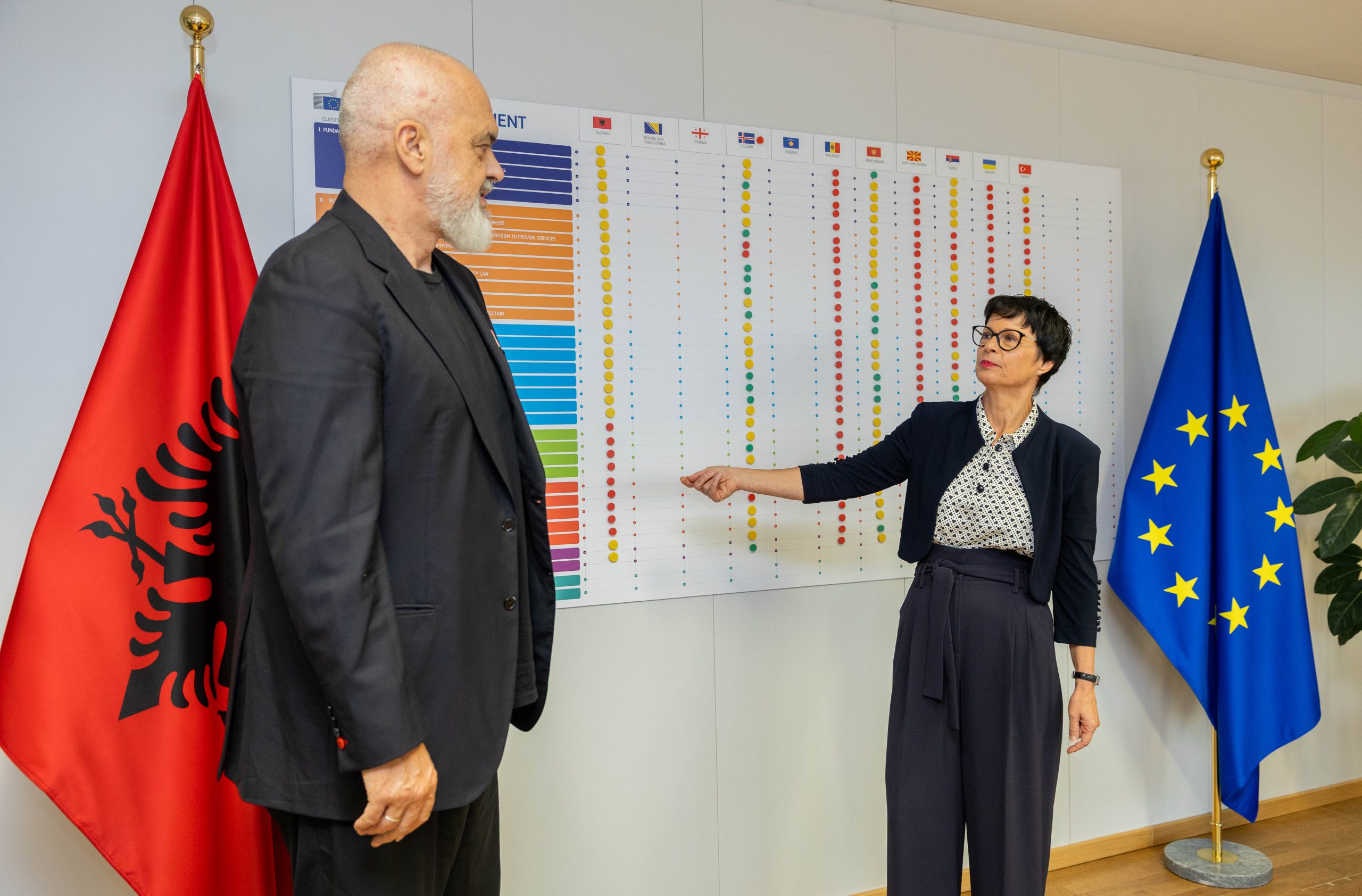Democracy in Western Balkans is backsliding. Civil society, international organizations and independent experts have been reporting on unfair election practices, rising corruption, lack of accountability and lack of media freedoms for some time. In its 2019 Report Freedom House ranked all six countries of the region as “partially free”, with Serbia’s status being downgraded for the first time after the fall of Milošević.
The dire situation, not taking into account limited positive trends in some parts of the Western Balkans, has also made the political situation quite heated. For weeks now, serious anti-government protests have been challenging the ruling elites in Albania, Montenegro and Serbia. And even though the context in each of these countries is different to a certain extent, our interlocutors agree that the non-democratic practices of the regional leaders are at least partially contributing to the participation of the citizens.
Nevertheless, the European Union has not signaled any significant change in its policy towards the region, which has been criticized by many as support of “stabilocracy”: mild treatment of the strongmen in the Western Balkans in exchange for political stability. However, the question is whether that stability is a given in the long run. The protesters would certainly beg to differ.
In between the common interest and the party politics
“The cause of spontaneous protests in Montenegro are recent scandals and events in the country which are additional proof of what has long been known: Đukanović’s party is in power thanks to a clientelistic interest network built over the years and undemocratic practices which underpin their rule. That’s why protests are organized under a call for the rule of law by a grassroots group called “Odupri se – 97000” (“Resist – 97000″) which is composed of activists and citizens without political affiliation”, explains Jovana Marović, Executive Director of the Politikon Network from Podgorica and a member of the Balkans in Europe Policy Advisory Group (BiEPAG).
The most famous scandal is doubtless the “Envelope”, which concerns the former mayor of Podgorica, who was caught on camera accepting a large amount of money, supposedly for influencing the election results in his constituency. Ironically, Montenegro has outranked other countries in the region on this year’s Corruption Perception Index by Transparency International, with 45 points (0 indicating the highest perception and 100 indicating the lowest).
Serbia, which has received only 39 points on the same Index, dropping two points from the previous year, has been witnessing protests for almost three months now, with more than 20 large cities and dozens of smaller areas hosting protest walks every weekend. The number of participants has been disputed, but the organizers claim that it has surpassed 20,000 in the capital of Belgrade several times.
Explaining its new ranking of the country, Freedom House notes that “Serbia’s status declined from Free to Partly Free due to deterioration in the conduct of elections, continued attempts by the government and allied media outlets to undermine the independent journalists through legal harassment and smear campaigns, and President Aleksandar Vučić’s de facto accumulation of executive powers that conflict with his constitutional role”.
Serbia has also seen its media freedoms score, accumulated by the Reporters Without Borders, drop noticeably in the past five years. A significant number of organisers and participants of the protests describe the same trends recorded by the international organisations as their main motivation for taking part.
Srđan Cvijić, Senior Policy Analyst on EU external relations at the Open Society European Policy Institute and another BiEPAG member, agrees “to a large degree” that the protests are mainly motivated by the lack of political and media freedoms, and not by the socio-economic situation. He nevertheless emphasises the need to avoid oversimplification.
“Different people and groups are motivated by different issues and there are differences between the three countries. Take Albania and Montenegro. Since the introduction of democracy, Albania went through a genuine alternation of power whereas Montenegro never experienced a change of government. Living conditions and population structure are also different. This certainly makes the motivations of people in the two countries to some degree different”, says Cvijić.
This point was further elaborated on for our portal by Blerjana Bino, Visiting Researcher at the Department of Informatics and Media at the Uppsala University, also a member of BiEPAG. Unlike the protests in Serbia and Montenegro, the most recent ones in Albania are clearly political parties’ protests, she says.
“The protests are organized by the opposition parties and their political structures. Citizens have been bombarded so much with empty political discourses from all sides that now they are numb. That is why there was some enthusiasm for the students’ protests to lead to wider protests demanding important changes in Albania. Unfortunately, that did not happen”, Bino explains.
Albania is also seemingly witnessing the most dramatic protests. There have been clashes with the police, with tear gas being used on several occasions. Furthermore, members of the opposition parties have resigned from their seats in the parliament, which was criticized by the EU officials. This move represents a higher level of protest compared to the action of opposition MPs from Montenegro and Serbia, who only vowed not to participate in the work of their national legislatures.
All of this is having a negative impact on ordinary citizens, Bino emphasises.
“Unfortunately, for some time now, political deadlock rooted in personal vested interests of politicians from all sides, is the only game in town, thus blocking every meaningful policy making process”, she states.
How serious of a challenge?
It is hard to predict to which degree the popular protests will shake the ruling parties. In the past, Western Balkans have seen the ousting of several strongmen by the thousands of people taking to the streets – most notably Slobodan Milošević in Serbia and Nikola Gruevski in North Macedonia – but more often than not, the popular protests have had much less influence than the people hoped, especially in Montenegro and Bosnia and Herzegovina.
As it was already stressed, only the protests in Albania are explicitly led by the opposition parties. In Serbia and Montenegro, on the other hand, the relationship remains a bit awkward.
“The organizers [in Montenegro] have made clear from the very beginning that any party features are not desirable during gatherings and protest marches. And this is a recipe for successful resistance to any kind of pressure. There are no visible attempts by any party to use the protests for their own promotion at the moment and it would be good to stay that way”, claims Marović.
She explains that the citizens desire fundamental changes and not just the change of the government. The protesters in Montenegro are clear in this message, which is directed both to the authorities and the opposition, and whether the demands will be met depends both on the public as well as the outside pressure, she underlines.
The situation is similar in Serbia, where the opposition leaders are having great difficulties in convincing the citizens that they have changed their ways, owing to the fact that the majority of them occupied important positions during the previous unpopular government’s tenure.
It seems that President Vučić is well aware of the still unconsolidated position of the opposition members, mostly gathered in the ideologically heterogeneous “Alliance for Serbia”. He has since launched a counter-campaign across the country but also refused to talk to his challengers about the topics such as fair electoral conditions. Cvijić is not optimistic that this will change.
“The government shows no readiness to compromise and meet the demands of the opposition. Montenegro went through this process ahead of the 2016 elections. After several months of protests (since 2015), and a split in the ruling coalition the provisional government of electoral trust was established in May 2016, it included the ruling DPS party and several opposition parties. Yet the time to implement reforms ahead of the October 2016 elections was short and the DPS won the elections (basically using same mechanisms to limit free and fair voting) and only came out stronger, strengthening its grips on power”, he explains.
The government of Albania has taken similar steps to counter the protests. They are engaged in responding to the actions of oppositions with huge public meetings and more and more PR and ‘spin-doctoring’, Blerjana Bino reminds.
“Basically, Albanian citizens are once more spectators of the political play”, she concludes.
What will happen remains to be seen, but if the current governments stay in power, which still seems likely, a very important question emerges: should the EU continue with its present treatment of regional leaders? Is the risk of recurring protests something it is willing to take?
“There will be no Balkan spring”
The statement of European Commission Spokesperson Maja Kocijančič on Monday, in which she condemned Albanian opposition for leaving the parliament, sparked a lot of controversy across the region. Even though Kocijančič did not want to compare the developments in each individual country and stressed that every citizen has the right to a peaceful protest, her assessment that “there will be no Balkan spring” was mostly interpreted as the EU backing the status quo.
Cvijić, however, believes that the EU will have to change its position in the long run.
“As we are, the governments in the EU member states are aware of the democratic backsliding in the Western Balkans. Yet, EU member states (some, like France, more than others) are currently extremely risk-averse when it comes to future enlargement. This makes them focus more on geopolitical issues and overall stability of the region”, he explains.
According to him, insistence on Copenhagen criteria for membership, which concern democratic governance and the rule of law, are bound to come to the top of the agenda when and if bilateral issues in the region, especially Kosovo-Serbia dispute, are resolved.
“It is also important that the opposition fully embraces the EU membership perspective. As long as the governments are able to present themselves as a “better alternative” it would be hard for the opposition leaders to have their voices heard in a meaningful manner in the EU fora”, he underlines.
One of the often neglected topics is how exactly the European Union should change its approach. In Marović’s view, this would require enhanced monitoring, precise reporting, as well as clear requirements that the state should fulfill annually. Assessment of the progress should be accompanied by sanctions or incentives.
However, she also remarks that the first reactions from the EU to the protests are not encouraging. Bino agrees, expressing her view that the EU-Albanian relations will not significantly change.
“Traditionally, the international community has favored stability over democracy. In addition, they cannot go back to what they have already done: certify as free and fair elections the ones in 2017, that the opposition is claiming were damaged by the phenomenon of vote-purchase and links to crime”, she concludes.
It seems that there is no “winning strategy” for the EU. On the one hand, it most certainly cannot throw its weight behind opposition candidates who lack clear legitimacy (even though some minor changes in Serbia have become visible, with the meetings between opposition leaders and EU officials increasing over the past weeks). On the other, the Union might risk losing support among ordinary citizens if its policy remains completely unchanged.
“Local population grows more and more disillusioned with the EU especially because they see it as siding with local strongmen who capture their states. This may be a wrong perception but it’s a prevailing one”, warns Cvijić.









